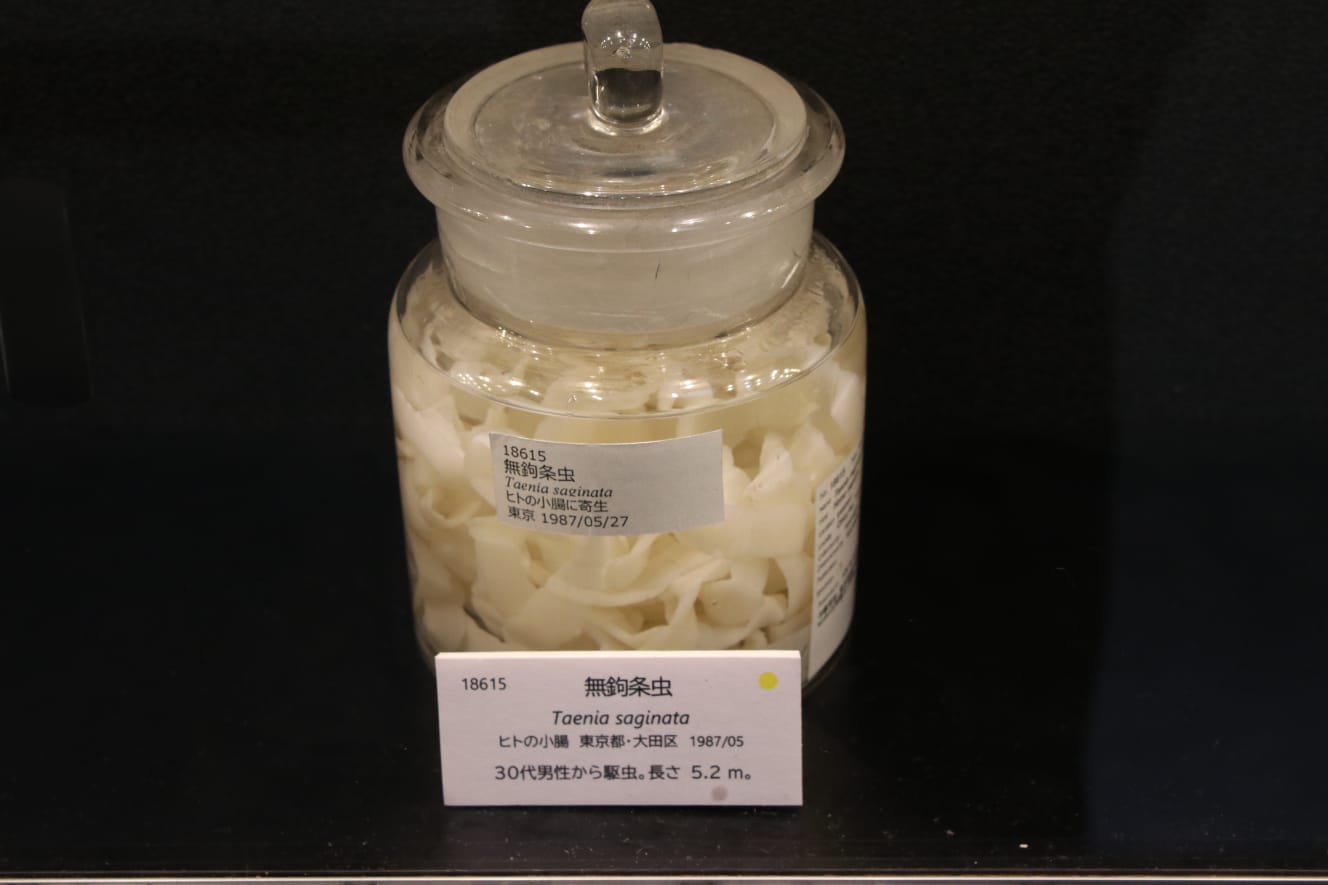Bill Gates Awe at the 8.8-Meter Tapeworm and the Meguro Parasite Museum Unveiling the Reality of Parasites
Parasites attach themselves to and inhabit the bodies of humans and animals. In the 1950s, soon after the end of World War II, about 70% of the Japanese population was afflicted by parasites, and many people lost their lives.
There is a place that promotes research, education, and awareness of such parasites. The Meguro Parasite Museum is a 12-minute walk from Meguro Station. The first and second floors of the building are open to the public free of charge as the museum’s exhibition rooms, where about 300 immersion specimens and related materials are on display. Even Bill Gates has visited the museum in sympathy with the museum’s educational activities.
In this issue, we focus on parasites that exist in our daily lives, the damage they cause, and the history of the Japanese people’s struggle to control them. We will take a closer look at parasites that we do not usually know much about (statements by Toshiaki Kuramochi, director of the museum, are in parentheses below).
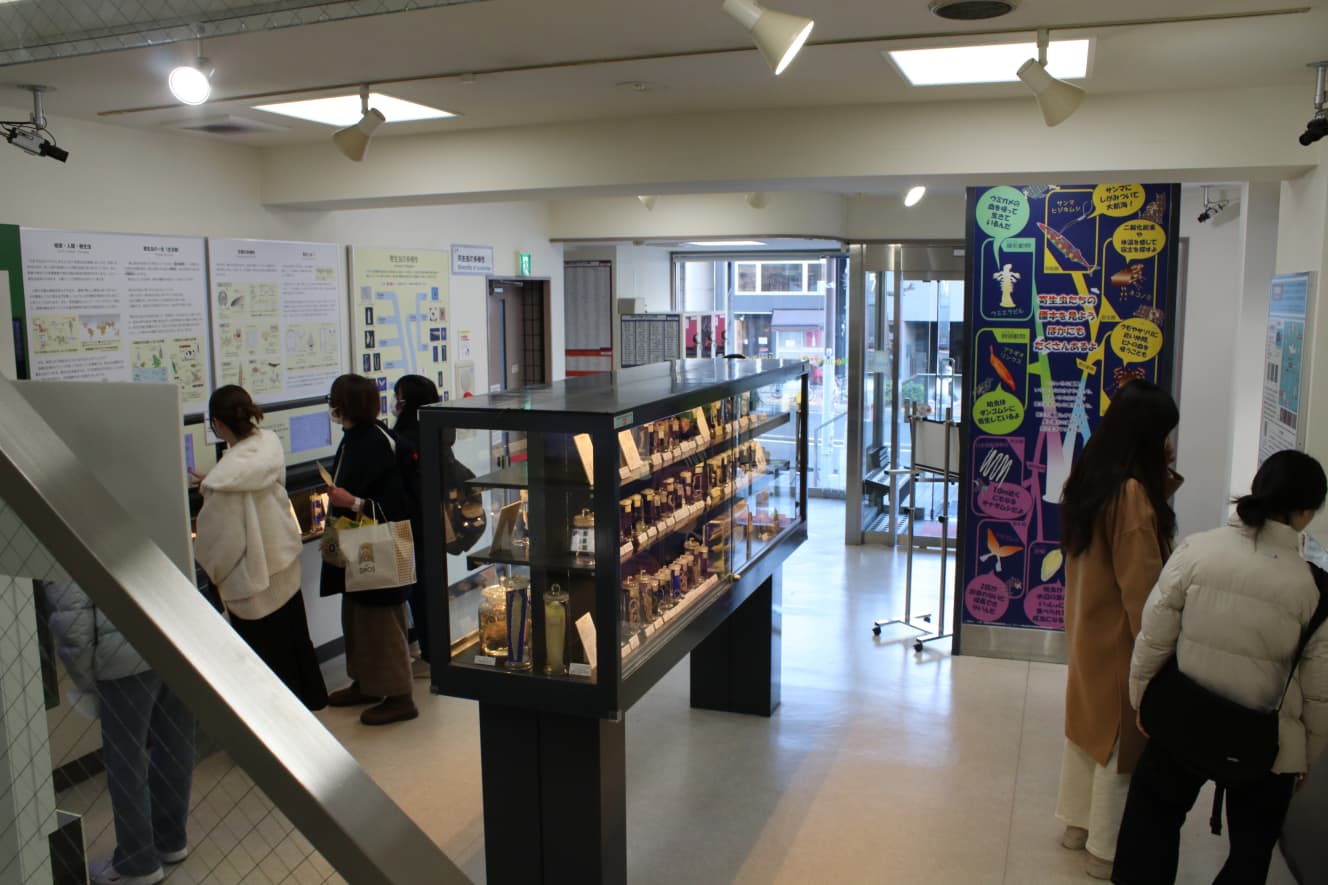
After World War II, the level of hygiene declined and parasite infestation increased.
The “Meguro Parasite Museum” was established in 1953 by Dr. Saturo Kamegai, a medical doctor and Ph.D., specializing in parasites. It was created shortly after the end of World War II when people were troubled by parasites. Its purpose was to educate and raise awareness about infectious disease prevention, public health, and prevention. In 2023, it celebrated its 70th anniversary. The first floor allows visitors to explore the diversity of parasites and view liquid-preserved specimens, while the second floor provides information about parasites and their history.
“At the time of its establishment, the world was in turmoil due to war, and everyone was struggling to survive. Hygiene levels were even lower than before the war, and the damage caused by soil-borne parasites and malaria transmitted by mosquitoes continued to increase.
Subsequently, treatment and medication prescriptions were continued, but without a change in people’s awareness, the vicious cycle could not be broken. We have continued education and awareness campaigns, starting from basic practices like washing vegetables with clean water and thoroughly washing hands.” (Statement by curator Toshiaki Kuramochi)

Currently, there are about 200 kinds of parasites that attach themselves to humans worldwide, and about 100 kinds have been recorded in Japan. While you may think of parasites as those that do bad things inside the body, insects on the body surface, such as ticks and fleas, are also included in the category of parasites.
Soil-borne parasites, which are transmitted through contaminated soil, were mainly prevalent from the prewar period to the end of the war, as manure was used as fertilizer in those days. Infections were spread through farm work on contaminated farmland, contaminated crops and water, and children playing in the mud.
Multiple parasitism was not uncommon, and in some cases, the parasites invaded the brain and killed the victim.
Caution with gibier cuisine, neurological symptoms and anaphylactic shock may occur.
The most troublesome case is when parasites from animals other than humans are introduced into humans. Animals in which adult parasites are parasitized are called “terminal hosts,” and animals in which parasite larvae are parasitized as developmental sites are called “intermediate hosts. The well-known end-host of Anisakis in Japan is the whale, but an allergic reaction occurs when humans swallow live Anisakis larvae as a result of eating raw fish and shellfish. This is anisakiasis. Such reactions do not occur at all in whales.
When humans swallow larvae or eggs of parasites from animals other than humans, serious diseases occur when the larvae invade organs and tissues different from the original parasite site, or when humans become like intermediate hosts and the larvae invade all organs. If the infestation is in the nervous system, neurological symptoms such as epileptic seizures and coma can occur, and if the larvae spread throughout the body, anaphylactic shock can occur.
“With the advancement of medicine and research, measures such as handwashing, disinfection, and cooking or freezing raw food have become widespread, reducing the incidence of parasitic infections. However, recently there is a need to be cautious with game meat dishes. While cattle and pigs are livestock and humans control their feed, wild animals used for game meat eat unknown foods in the forest. There is a possibility that parasites present in game meat could enter the human body, so it’s advisable to either cook thoroughly or freeze the meat before consumption.” (Same source).
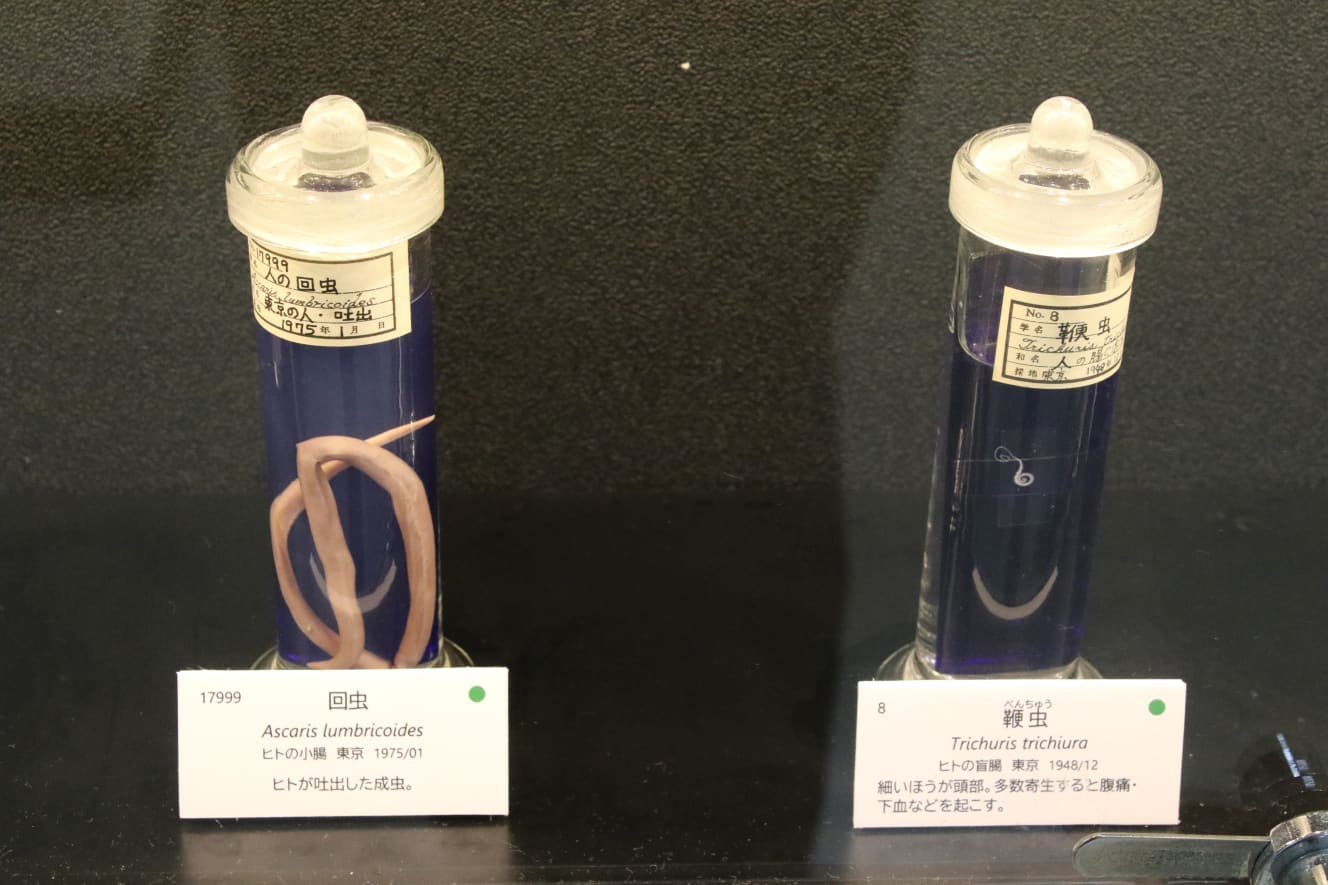
Grapes cultivation, a key industry in Yamanashi, was also triggered by parasite control.
Today, parasite damage has been greatly reduced, but this is due to the fact that in the past, the Japanese people faced parasites head-on and fought to suppress them. From here, let’s take a look at the records and achievements of the Japanese people in relation to parasites, along with the materials displayed on the second floor.
Bancroft’s Threadworm
Bancroft’s filariasis is a parasite that is widely distributed in temperate and tropical regions of the world and was once found in many parts of Japan. Bancroft’s filamentous worm was transmitted by mosquitoes, and by parasitizing the lymphatic system and stopping the flow of lymph, it caused elephantiasis, a thickening of the skin, and scrotal edema, a condition in which the skin accumulates in the scrotum. This condition was depicted in a work by Katsushika Hokusai and was called lymphatic filariasis.
The fight against filariasis in Japan took place in the 1950s and involved the use of DDT (*abbreviation for dichlorodiphenyl trichloroethane), which was used by the US military, and Spatonin (diethylcarbamazine citrate), developed by Tanabe Seiyaku as an anti-cirrhosis drug. This led to the implementation of a control program aimed at eradicating larvae-carrying mosquitoes and treating patients.
*DDT: A highly potent insecticide used by the U.S. military during World War II.
The cycle of infection is broken by repeating the process of killing the insects in the body with oral medication and eliminating the mosquitoes with DDT. The control of filariasis was successfully completed in the 1970s, and filariasis on Jeju Island, Korea, was also controlled through a joint Japan-Korea project.
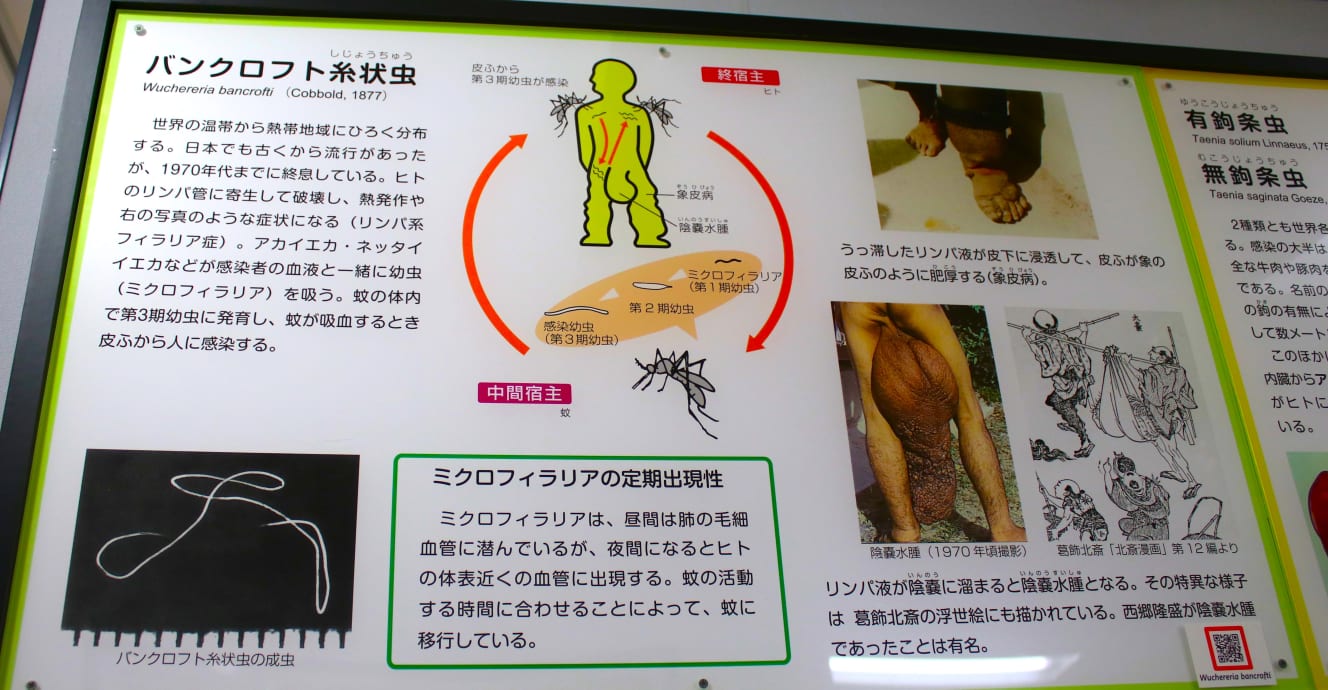
Japanese blood fluke
Japanese schistosomiasis was a disease endemic to a limited area of Japan. The cause was a parasite found in the body of a cat in Yamanashi Prefecture in 1904. When parasitized, the eggs produced in the intestinal wall, liver, and other blood vessels of humans clog the blood vessels. Eventually, it causes stunting and poor growth, resulting in emaciation and eventually death.
Treatment was difficult, requiring more than two dozen intravenous injections, and the side effects of the drugs were significant. The drug was sprayed in rice paddies and rivers to eradicate the mussel, Mytilus galloprovincialis, which carried the Japanese blood sucking bug, but the toxicity of the drug was considered a problem, and the effort did not go as smoothly as expected.
In 1936, however, the biologist Masatoshi Iwata took up the challenge. Biologist Masatoshi Iwata proposed concreting waterways. The purpose was to speed up the flow of water and prevent miyairi mussels from reproducing.
In Yamanashi Prefecture, where the last of the infected remained, land was improved to control the mussels, and the rice paddies that had existed until then were converted to peach and grape orchards. The vineyards that have now become Yamanashi’s core industry are the result of the struggle between industry, academia, government, and the private sector and the parasite. It was only recently, in 1996, that Yamanashi Prefecture announced a “declaration of the end of the disease.

The number of cases of parasite infestation has been dramatically reduced thanks to postwar mass examinations and the educational and research activities of various organizations. On the other hand, there is a theory that the symptoms that appear when parasites invade the body vary from person to person, and this theory is still being debated and studied today.
Whether you are interested in the ecology of parasites or just want to be inspired by the great achievements of our predecessors who fought for Japan, why not stop by?
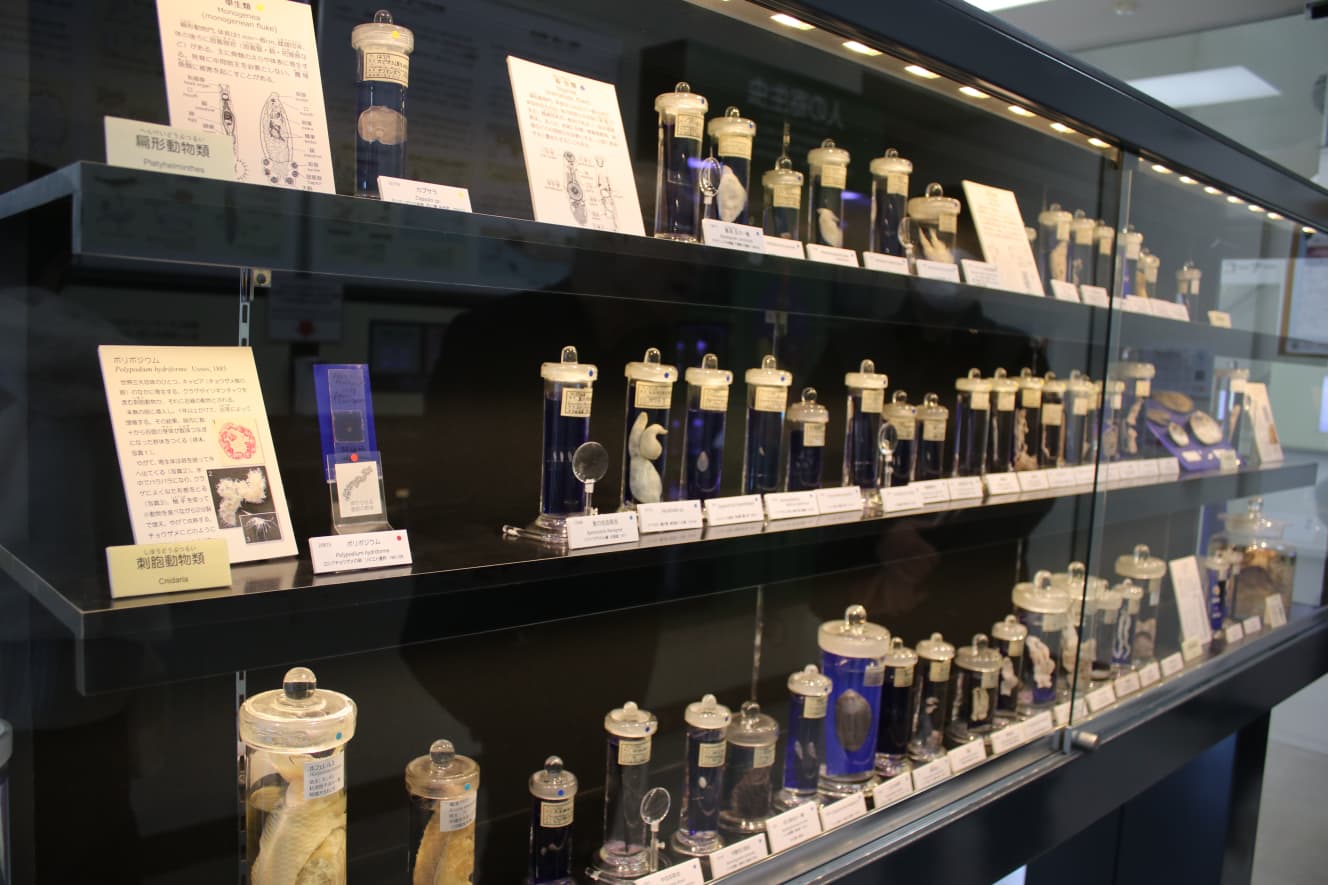
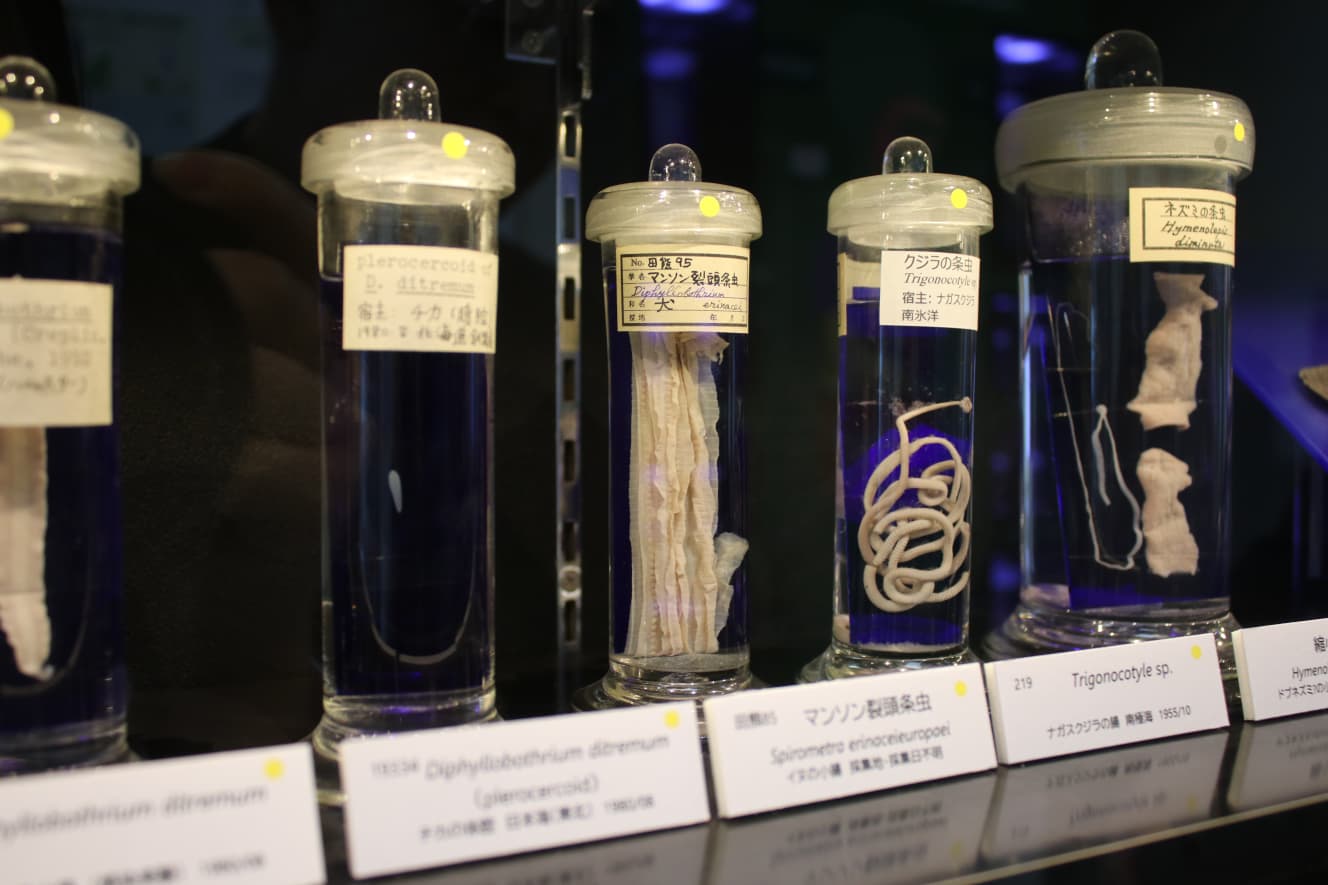
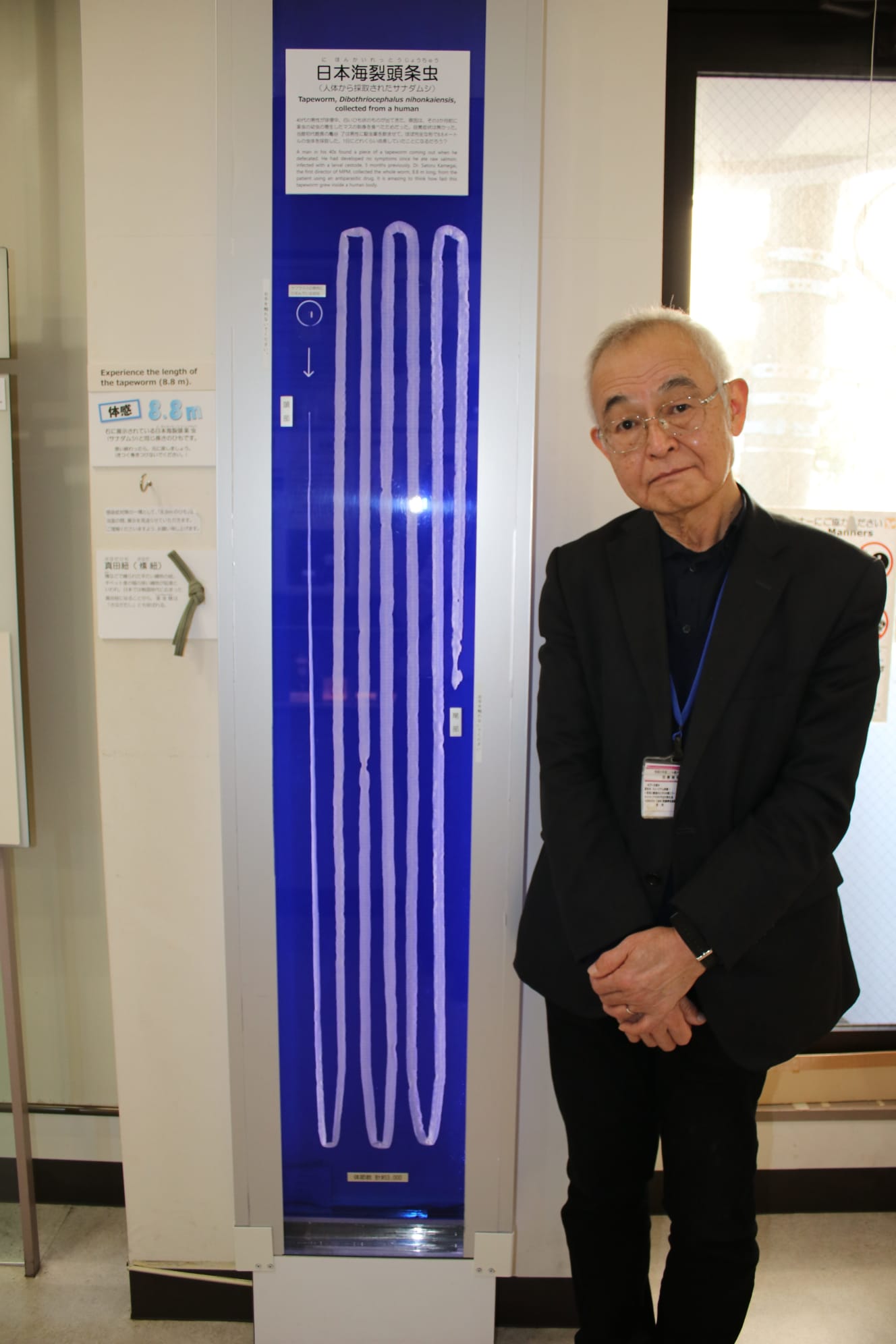

Interview and text by: FM Nakanishi
